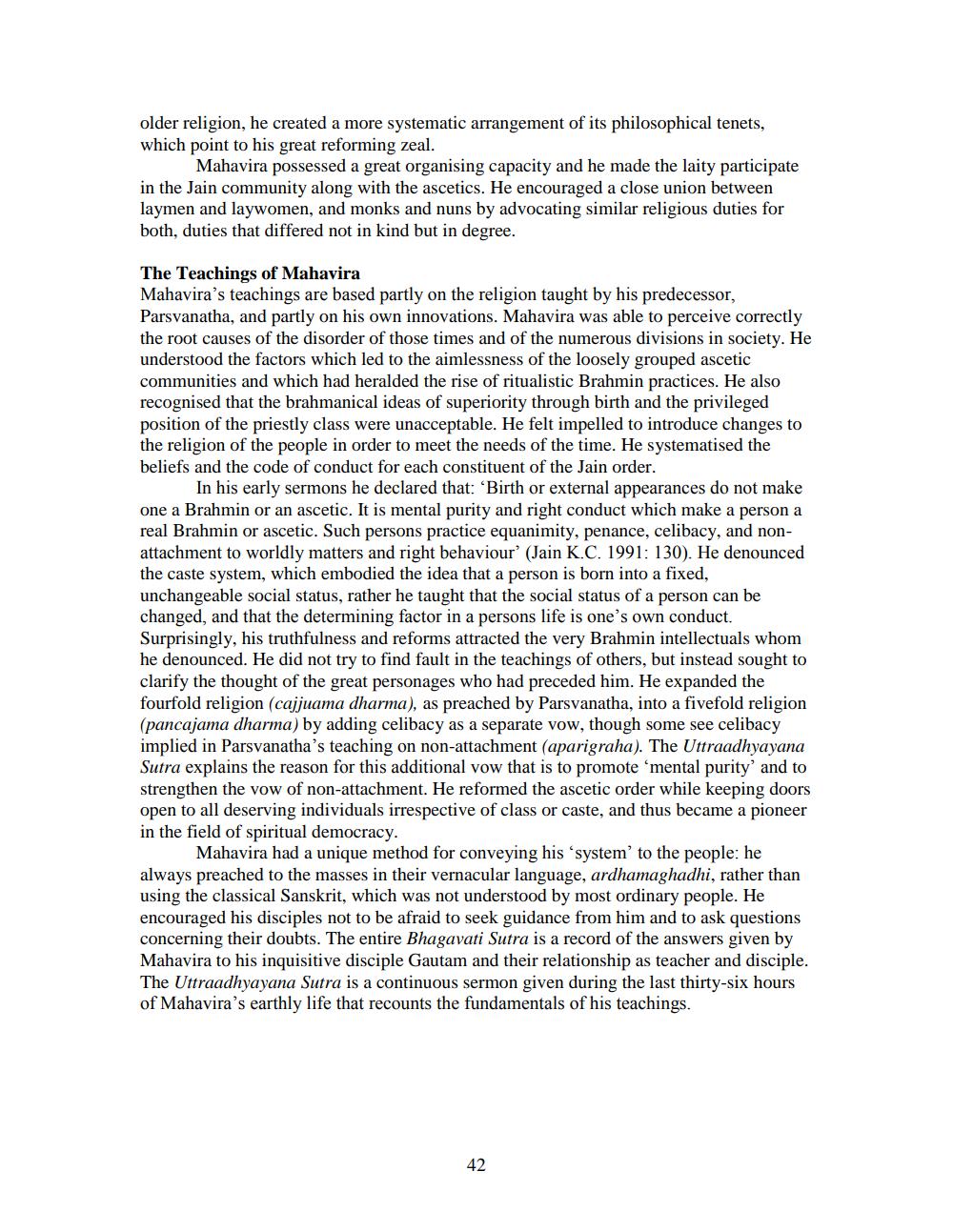________________
older religion, he created a more systematic arrangement of its philosophical tenets, which point to his great reforming zeal.
Mahavira possessed a great organising capacity and he made the laity participate in the Jain community along with the ascetics. He encouraged a close union between laymen and laywomen, and monks and nuns by advocating similar religious duties for both, duties that differed not in kind but in degree.
The Teachings of Mahavira
Mahavira's teachings are based partly on the religion taught by his predecessor, Parsvanatha, and partly on his own innovations. Mahavira was able to perceive correctly the root causes of the disorder of those times and of the numerous divisions in society. He understood the factors which led to the aimlessness of the loosely grouped ascetic communities and which had heralded the rise of ritualistic Brahmin practices. He also recognised that the brahmanical ideas of superiority through birth and the privileged position of the priestly class were unacceptable. He felt impelled to introduce changes to the religion of the people in order to meet the needs of the time. He systematised the beliefs and the code of conduct for each constituent of the Jain order.
In his early sermons he declared that: 'Birth or external appearances do not make one a Brahmin or an ascetic. It is mental purity and right conduct which make a person a real Brahmin or ascetic. Such persons practice equanimity, penance, celibacy, and nonattachment to worldly matters and right behaviour' (Jain K.C. 1991: 130). He denounced the caste system, which embodied the idea that a person is born into a fixed, unchangeable social status, rather he taught that the social status of a person can be changed, and that the determining factor in a persons life is one's own conduct. Surprisingly, his truthfulness and reforms attracted the very Brahmin intellectuals whom he denounced. He did not try to find fault in the teachings of others, but instead sought to clarify the thought of the great personages who had preceded him. He expanded the fourfold religion (cajjuama dharma), as preached by Parsvanatha, into a fivefold religion (pancajama dharma) by adding celibacy as a separate vow, though some see celibacy implied in Parsvanatha's teaching on non-attachment (aparigraha). The Uttraadhyayana Sutra explains the reason for this additional vow that is to promote 'mental purity' and to strengthen the vow of non-attachment. He reformed the ascetic order while keeping doors open to all deserving individuals irrespective of class or caste, and thus became a pioneer in the field of spiritual democracy.
Mahavira had a unique method for conveying his 'system' to the people: he always preached to the masses in their vernacular language, ardhamaghadhi, rather than using the classical Sanskrit, which was not understood by most ordinary people. He encouraged his disciples not to be afraid to seek guidance from him and to ask questions concerning their doubts. The entire Bhagavati Sutra is a record of the answers given by Mahavira to his inquisitive disciple Gautam and their relationship as teacher and disciple. The Uttraadhyayana Sutra is a continuous sermon given during the last thirty-six hours of Mahavira's earthly life that recounts the fundamentals of his teachings.
42




